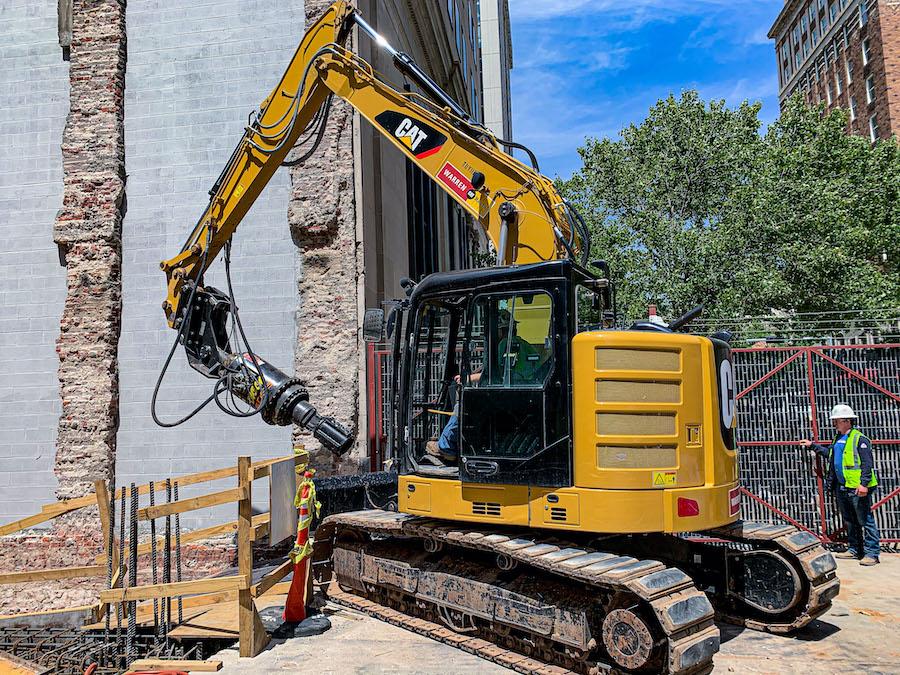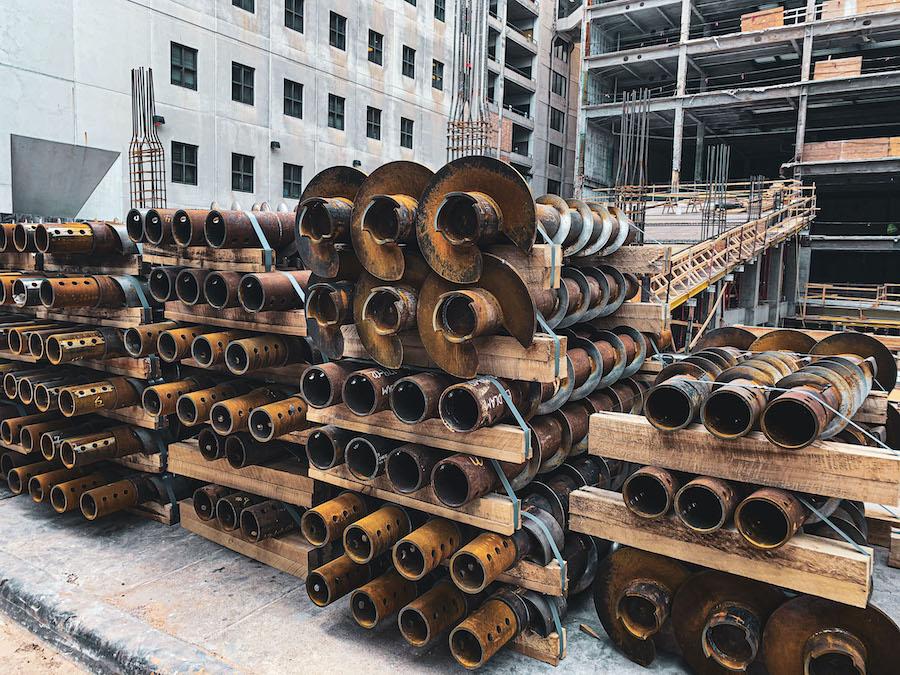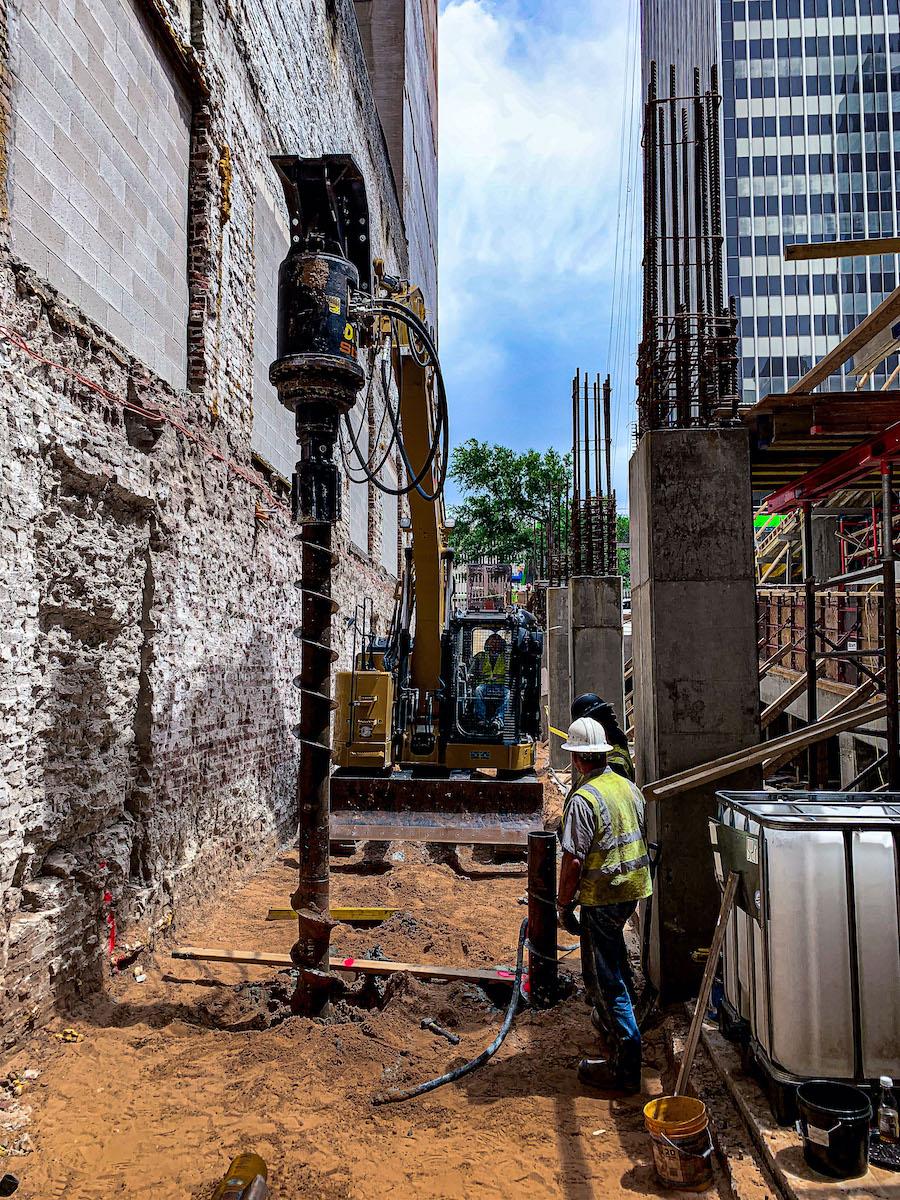OVERVIEW:
The $275 million First National Center renovation, one of the country’s most significant restoration projects, is happening in downtown Oklahoma City. The art deco tower was built for First National Bank in 1931 and is now a designated historic landmark. When the renovation is completed in the fall of 2021, the tower will house 193 apartments and 146 hotel rooms as a Marriott Autograph property.
A 14-story annex, built at the rear of the First National Center in 1977, was demolished to make way for a new ramp structure which will send cars to the parking tower in the center of the complex. Pre-existing grade beams are being used to support much of the new construction, but four new columns were needed for additional support.

CHALLENGE:
“One of the biggest challenges was limited access,” said Jack Erickson of Bedlam Concrete Lifting, the pile installation contractors chosen for this project. “The access ramps to the parking tower were already under construction, so they could not be used to access the installation area. The installation area was only 11′ wide, and a ramp had to be built for installation equipment and materials.”
Hollow bar micropiles were one of the piling methods considered initially for this project, but material was cost-prohibitive due to the required bit sizes. Solid bar micropiles were not an option because the piles would have required casing, and that would have been cost-prohibitive as well. With both of these pile types, all of the spoils would put the adjacent basement at risk of flooding and create a massive amount of cleanup work. Drilled-shafts were ruled out due to the size of the required installation equipment and minimal access.

SOLUTION:
STELCOR DDM’s were selected as an alternate, and an axial load test was performed to 622.5 kips and resulted in an impressive 0.097″ of movement. The pile also had to resist a lateral load of 18 kips. “Because STELCOR creates no spoils, excessive mud/water, or vibration, we didn’t have to worry about the basement right next to us. It was perfect for this project. Another huge benefit was the minimal installation equipment we needed,” said Jack. “The grout plant and pile sections were kept outside of the installation area, and we moved pile sections around using a mini-skid.” In total, 24 STELCOR piles were installed to a depth of 36 feet and everybody was happy.

INSTALLER:
Bedlam Concrete Lifting
LOADS:
622.5 Kips Compression
18 Kips Lateral
PILE DETAIL:
STELCOR 1600
18” Tip or Drive Plate
16” Corrugated Grout Column
13” Solid Grout Column
11” Reverse Grout Auger
7.00” O.D. X 0.408” W.T. – 80 ksi Central Shaft
SOILS + EMBEDMENT DEPTH:
The soil profile within the bond zone of the pile consisted of loose to medium dense silty sands and sandy silts from top of the pile to 35-ft with an average N-value of 11, underlain by very hard sandy siltstone and sandy shale with an N-value of 50/3″.
